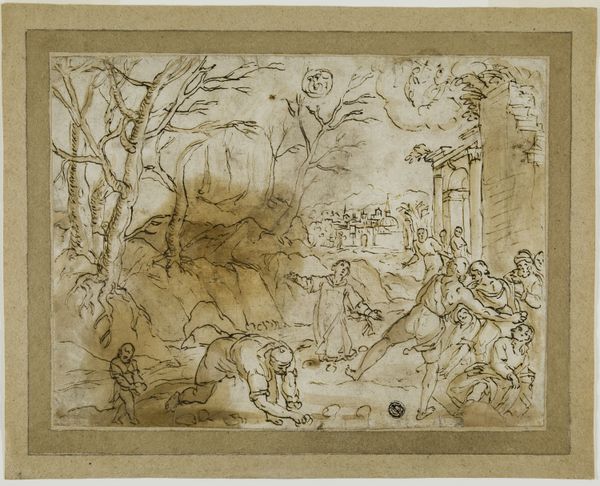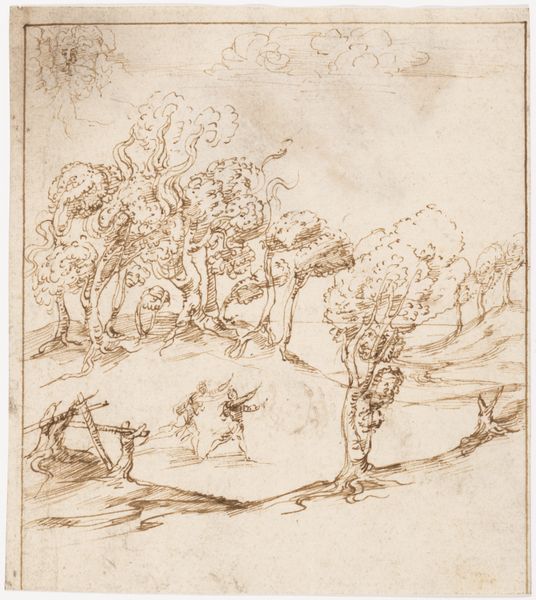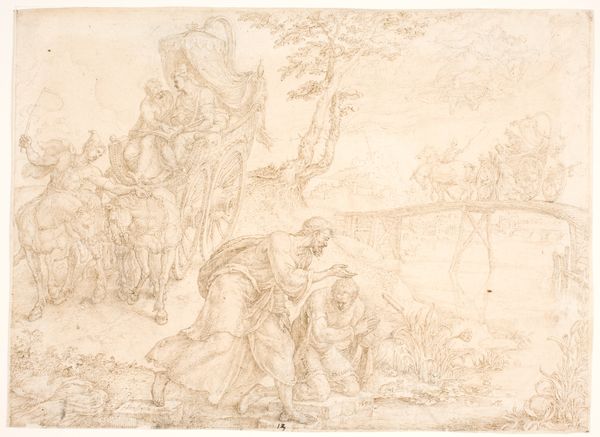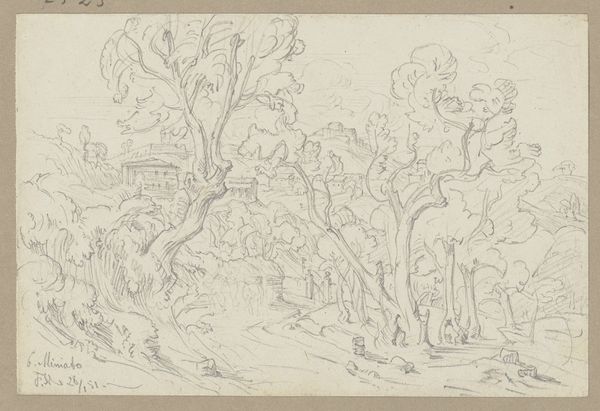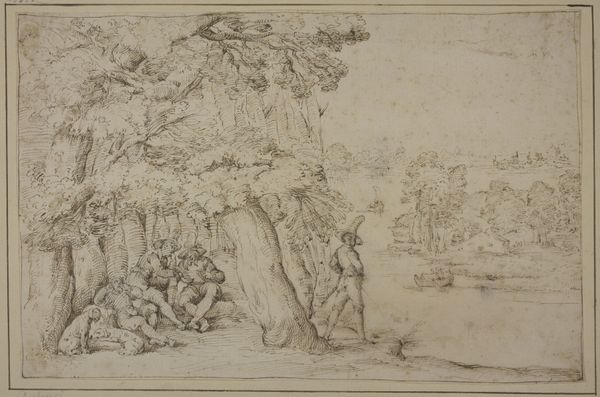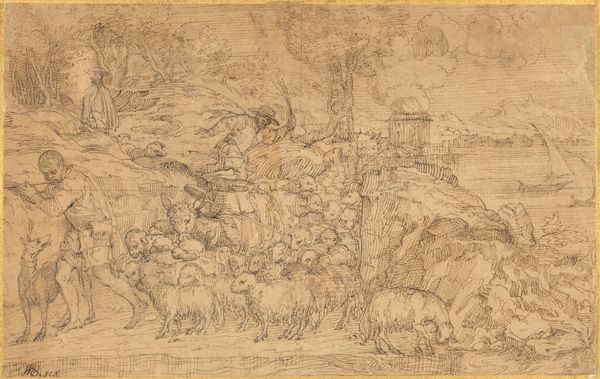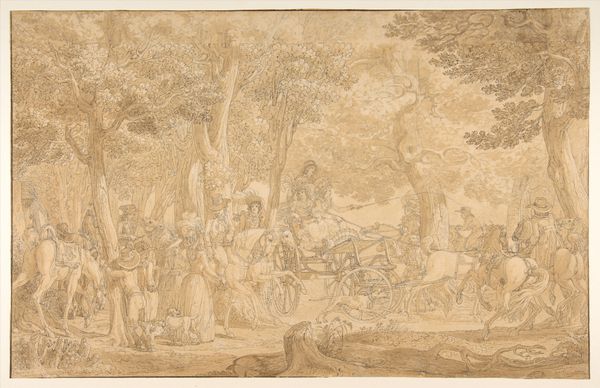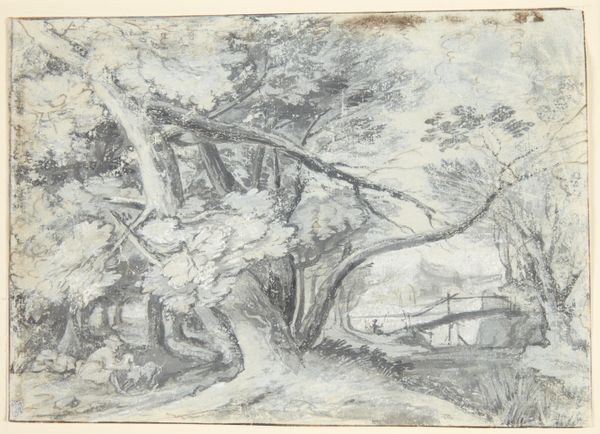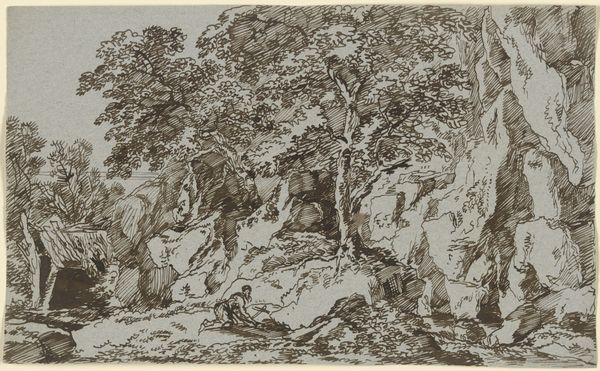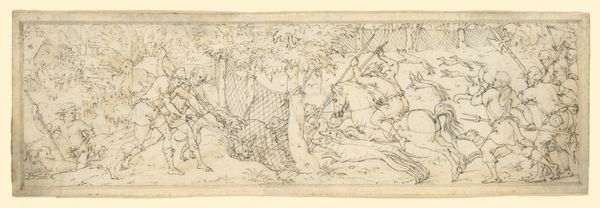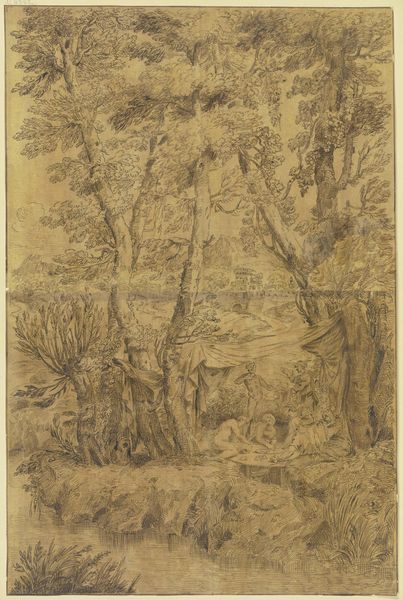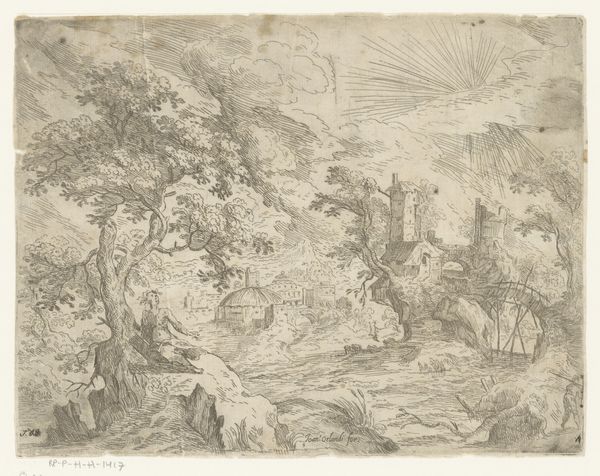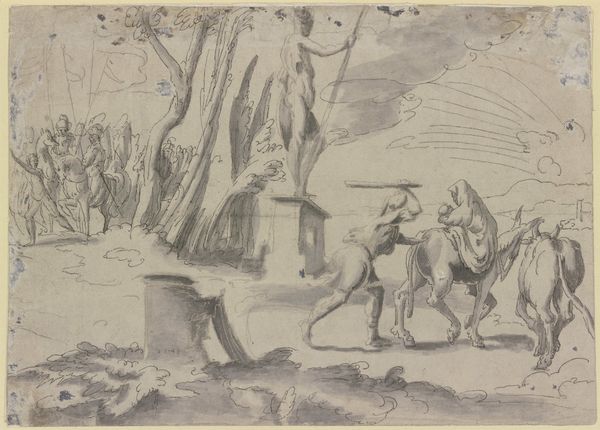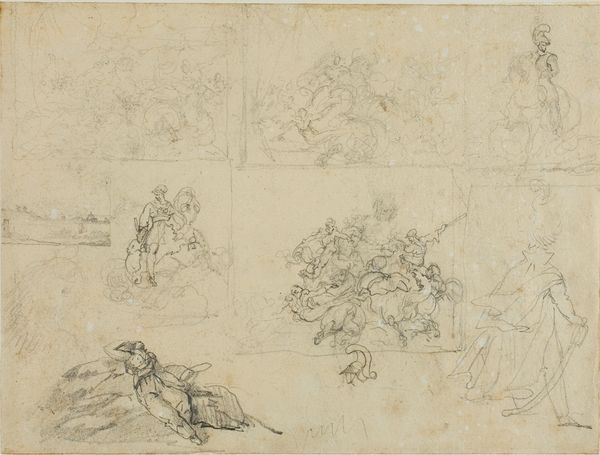
drawing, pencil
#
drawing
#
pencil sketch
#
landscape
#
figuration
#
11_renaissance
#
pencil
#
history-painting
#
italian-renaissance
Dimensions: overall: 24.4 x 35.1 cm (9 5/8 x 13 13/16 in.)
Copyright: National Gallery of Art: CC0 1.0
Curator: Here we have Alessandro Allori’s "Sacrifice of Abraham," a pencil drawing. It possesses a certain sketch-like quality, with loosely defined figures within an airy landscape. What is your first impression? Editor: It strikes me as incredibly unsettling, even for the subject matter. The figures appear almost translucent against the stark landscape. The sense of impending violence is palpable despite the unfinished nature. Curator: Indeed. Allori was working within the late Renaissance, a period of immense political and religious upheaval in Italy, a context crucial for understanding its impact. The sacrifice of Isaac is laden with meaning relating to faith, obedience, and divine intervention, frequently explored in the context of political obedience. Editor: The narrative raises serious questions. The almost unquestioning obedience demanded is very pertinent to gendered power imbalances, and echoes throughout society. What does it tell us about how we negotiate our roles, then and now? The landscape is very symbolic. It reflects the drama playing out. The landscape is soft. Curator: Its openness is in dialogue with the figures. It also offers insight into Allori's working method as a painter. The drawing provided him with the means of quickly noting down various conceptual and compositional approaches, which often took shape during active consultations between artists and their patrons during this period. Editor: Do you think Allori aimed to create this dramatic feeling with just a simple drawing, or did he wish to take it into other forms? It makes one consider ideas of what an "ethical" request looks like in the sphere of interpersonal relationships. Can we reconcile divine commandment and patriarchal authority? Curator: It is very hard to ascertain, though certainly, he engaged with important social debates from the period that can easily extend into the present day. Editor: Looking at it this way shifts its relevance, not just in the context of art history, but as a springboard for understanding dynamics that impact the present day. Curator: Absolutely. Hopefully, our listeners are taking this opportunity to delve into such social issues to understand a piece so closely related to its surrounding environment and themes.
Comments
No comments
Be the first to comment and join the conversation on the ultimate creative platform.
